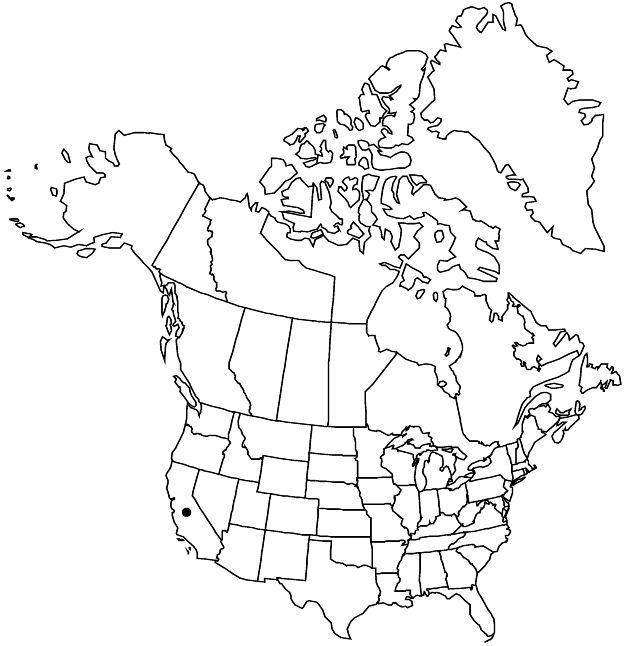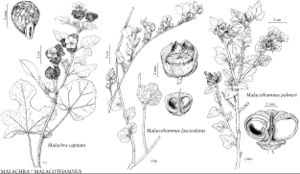Malacothamnus fasciculatus
Leafl. Bot. Observ. Crit. 1: 208. 1906.
Shrubs, 1–3(–5) m; branches usually slender; indument white to tawny, sparse to dense, stellate hairs sessile or stalked, 10–30-armed, arms 0.2–1.5 mm. Leaf blades ovate, broadly ovate, or round, unlobed or 3-, 5-, or 7-lobed, 2–6(–11) cm, usually thin, surfaces: adaxial gray-green and sparsely hairy, basal lobes not overlapping. Inflorescences cymose, spicate, racemose, or open-paniculate, flower clusters subsessile to pedunculate, usually many-flowered, glomerate to loose; involucellar bractlets subulate to linear, 1–6(–8) × to 1 mm, usually less than 1/2 (–2/3) calyx length. Flowers: calyx campanulate, 4–9(–11) mm, lobes triangular to ovate, 1.8–6(–8) × 1.5–3(–4) mm, usually slightly longer than wide, slightly longer than tube, apex acute to short-acuminate, densely stellate-hairy, hairs usually 10–30-armed, arms 0.2–1.5 mm; petals pale pink to mauve, to 2 cm. Mericarps 2–3.5(–4.5) mm. 2n = 34.
Phenology: Flowering Apr–Jul.
Habitat: Coastal sage scrub, chaparral
Elevation: 10–600(–2500) m
Distribution

Calif., Mexico (Baja California, Sonora).
Discussion
Malacothamnus fasciculatus occurs principally in the Coast and Transverse ranges. It recently was found in natural Sonora Desert scrub in Maricopa County, Arizona (S. Hunkins 2012). Whether introduced or native is not known; its presence supports the nativity of collections made by Thurber in Sonora in the early 1850s. In southern California, some variants have been recognized infraspecifically: var. laxiflorus, with open-paniculate inflorescences, occurs essentially through the range of the species except in the coastal Peninsula Ranges; var. nuttallii, robust plants with paniculate inflorescences, often densely white-hairy adaxial leaf surfaces, and floral and carpel measurements in the upper ranges, occurs in the Transverse Ranges of Santa Barbara and Ventura counties; var. nesioticus, presumably with fastigiate inflorescence branches, but essentially the same as var. nuttallii, occurs on Santa Cruz Island; var. catalinensis, robust plants with spicate to narrowly paniculate inflorescences, occurs only on Santa Catalina Island. In northern California, populations generally have floral measurements in the lower range, although in the Santa Cruz Mountains plants sometimes have involucellar bractlets in the upper range. Otherwise, populations vary in patterns similar to those of southern California. Malacothamnus fasciculatus intergrades with M. davidsonii and M. fremontii in the Transverse Ranges and M. densiflorus in the Peninsula Ranges.
Selected References
None.
